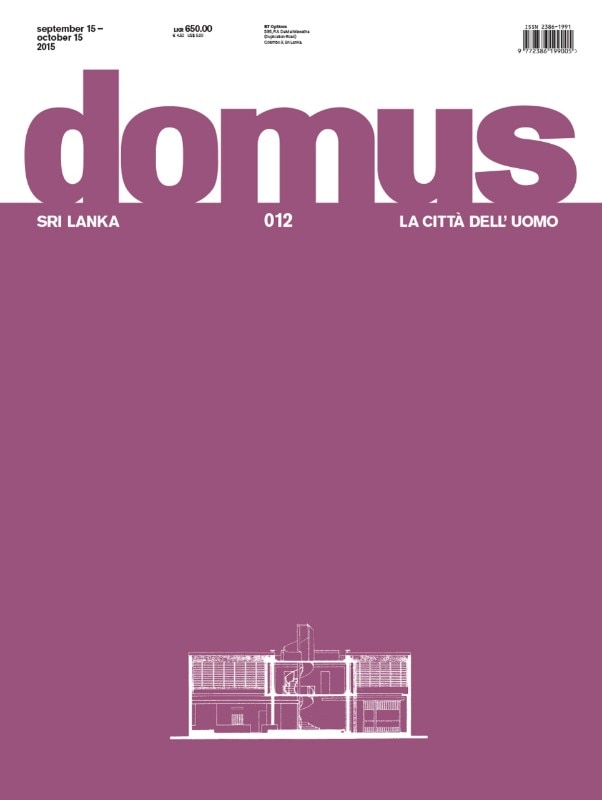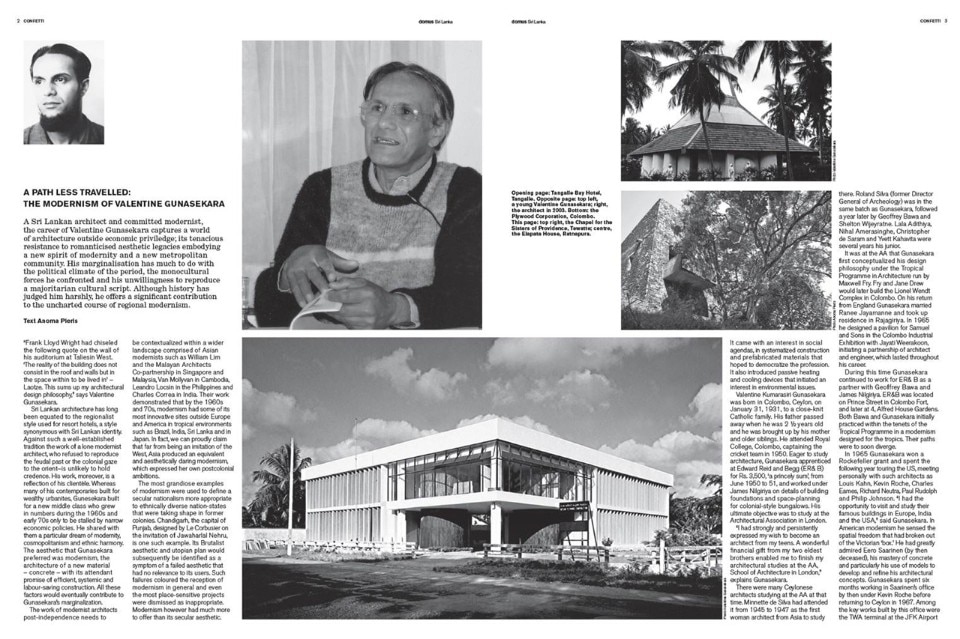He was one of the most influential architects of the post-independence era where he moved away from regionalism and vernacular expression to address issues of modernity and technology in a climate of socio-political change. His deep belief in his faith and the need to express this in the form of democratic architecture enabled him to create in new and expressive ways. Gunasekara was one of the pioneers who utilised pre-caste concrete in their work. While many architects during the 1970s built for the affluent, Gunasekara was different in the sense that his clientele was from a new middle class. Having been exposed to the architecture in the US, Europe and India, Valentine Gunasekara sought to introduce a Sri Lankan modernism that was suited the country’s climate and culture and it was understanding that the landscape-centred tradition of America was more suited for the country thus breaking away from the Europe centred colonial past. He was one of the first architects to build models of the projects designed. His contribution to the architecture of this country has not been discussed at any for a, but if we are to really understand the architecture of this country we need to recognise architects that have had the courage to be different and move away from idealisation of the past.
Having analysed the historically significant doorways and entrances of the Anuradhapura and Polonnaruwa periods, in this issue we focus on the Gampola and Kandy Kingdoms. The narrative explains the manner in which the decorative elements as well as the actual doorways and entrances have evolved encompassing the Sri Lankan tradition while incorporating the influences that were prevalent at that time. The project feature on the corporate headquarters of the multinational telecommunication provider Dialog Axiata discusses the architect’s design concept, the manner in which the land area was maximised as the manner in which sustainability and energy efficiency has been ensured while the corporate identity of the client has been maintained. Located in a hectic precinct of Colombo city this building has created a landmark in an otherwise unassuming locality.
From beyond Sri Lanka, we feature the new Darsena in Milan where the discussed project transforms a once abandone area into a metropolitan public space; and, the urban block also in Milan, which reveals the mastery of the architect in constructing a new building between two existing historical ones. Spanish architect Alberto Campo Baeza referring to his visit to a recent house by Valerio Olgiati in Portugal and the work of Christian Kerez in Switzerland, provides an accurate consideration on the use of structures, and concludes that there is not one overriding truth in architecture; and, the managing director of Rimadesio narrates a story that is a mixture of awareness and pride, where a sense of belonging to the Brianza region allows the company and its employees to rise to the challenge of ever more ambitious new objectives.



